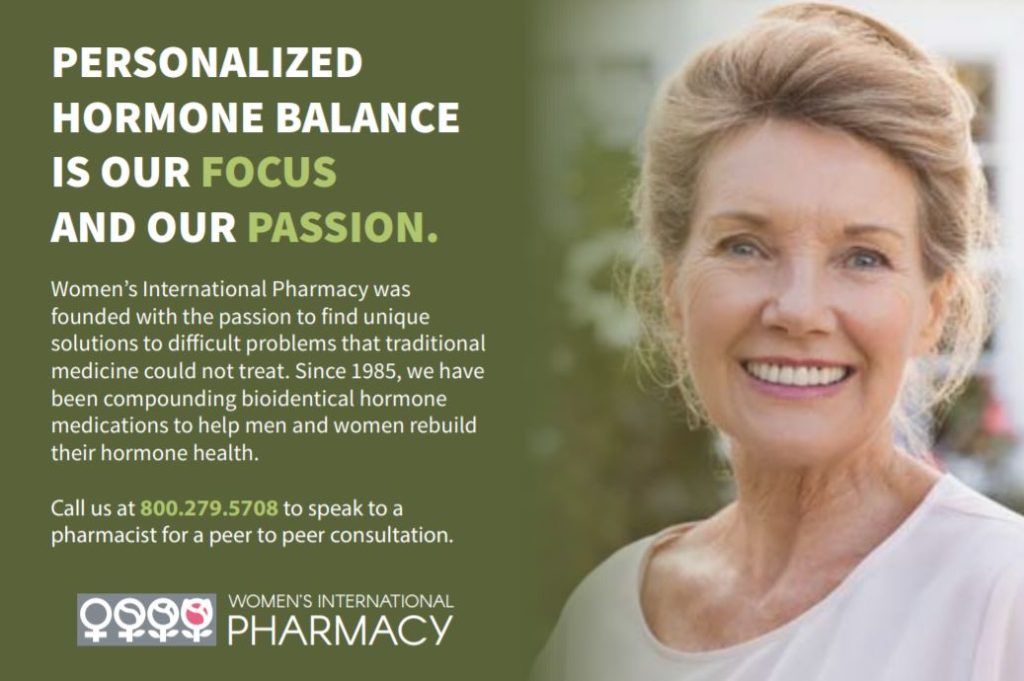article continued…
L-Carnitine for Pemphigus Vulgaris
A student in Tehran, Iran, as part of a master’s of science thesis, conducted a double-blind trial that examined the effect of L-carnitine (2 g per day for 8 weeks) on various laboratory parameters in patients with pemphigus vulgaris. Outcome measures included serum levels of LDL cholesterol and triglycerides, total oxidant capacity, total antioxidant capacity, serum markers of bone turnover (osteopontin and bone morphogenic protein) and a serum marker of renal function (cystatin C). Most of these parameters improved significantly in the L-carnitine group compared with the placebo group. This research generated two papers in the medical literature, one in 20186 and one in 2019.7 That both papers came from the same study is demonstrated by the fact that both listed the same registration document in the Iranian Registry of Clinical Trials (IRCT). Each paper presented a different portion of the data. Examination of these papers raises several issues.
1. Discrepancy in sample size: One paper stated that 52 patients were randomized, whereas the other paper stated that 48 were randomized. This difference was due to a difference in the number of eligible patients who refused to participate.
2. Discrepancies regarding inclusion criteria: The 2018 paper stated that patients had to have pemphigus vulgaris for at least one year. The 2019 paper stated that patients were eligible if they had the disease for “about 1 year.” Considering that pemphigus vulgaris is a chronic disease, these different inclusion criteria would result in very different patient populations.
3. Discrepancy in compliance assessment: One paper stated that compliance was determined by measuring serum carnitine levels, whereas the other paper stated that compliance was assessed by the number of pills returned.
4. Discrepancy in the number of withdrawals: One paper stated that four patients withdrew in the L-carnitine group and six withdrew in the placebo group. The other paper stated that six patients withdrew in the L-carnitine group and no patient withdrew in the placebo group.
5. Discrepancy in the source of the study medication: Both papers stated that L-carnitine and placebo were manufactured by Asal Daroo Kish Pharmaceutical Company in Kish, Iran. The IRCT document stated that L-carnitine and placebo were manufactured by the KAREN Chemistry Company.
6. Issues related to outcome measures: Two of the outcome measures used in the 2019 paper (bone morphogenic protein and cystatin C) were added to the IRCT document more than two years after the trial was completed. It is possible that the researchers used stored frozen serum to measure these parameters. However, when researchers use stored samples from a previous study, they typically indicate so in the Materials and Methods section, which was not done in this case.
7. Question related to funding: Because randomized controlled trials that include multiple outcome measures are expensive to conduct, such trials are generally reserved for treatments for which there is some evidence of efficacy (such as case reports or uncontrolled trials). Such was not the case with respect to L-carnitine as a treatment for pemphigus vulgaris. One wonders why Tehran University of Medical Sciences, which almost certainly has limited financial resources, would have funded such a study.
8. The day before this editorial was completed, a third paper based on the same L-carnitine/pemphigus study appeared in the medical literature. In this paper, new lab tests were conducted, including serum levels of secreted frizzled‐related protein‐5 (SFRP5), omentin, and visfatin.8 These outcome measures were added to the IRCT document more than two years after the trial was completed. Similar to point number 6 (above), no mention was made that stored frozen samples were being used for these additional lab tests. Even more baffling was the statement that the sample size for the study was calculated based on the standard deviation and difference in mean for serum SFRP5 (those values had been reported previously in the medical literature). There are two problems with that statement. First, one wonders why the Iranian researchers would have based their sample size on serum SFRP5 data, considering that they did not decide to measure that variable until two years after the study was completed. Second, the statement contradicts one of the other papers, which stated that the sample size was based on the standard deviation and mean difference of serum osteopontin (not SFRP5).
Vitamin E Vaginal Suppositories for Atrophic Vaginitis
In the November 2019 issue of the Townsend Letter I reviewed a 2019 paper that found vitamin E vaginal suppositories were as effective as conjugated estrogens vaginal cream for improving sexual function in postmenopausal Iranian women with vaginal atrophy.9 I commented at the time that it is difficult to believe vitamin E would be as effective as conjugated estrogens, and that confirmatory studies are needed. I have since learned that another paper, from 2016, came from this same research (both papers listed the same IRCT document and the papers had many identical features). The 2016 paper reported that vitamin E vaginal suppositories improved histological signs of vaginal atrophy in postmenopausal women, although it was somewhat less effective than intravaginal estrogen.10 Examination of these papers together raised several additional concerns.
1. Discrepancy in recruitment dates: One paper said the study was conducted in 2014, whereas the other paper said it was conducted from March 2013 to April 2014.
2. The score on the Abbreviated Sexual Function Questionnaire was listed as the primary outcome measure in the 2019 paper. However, this questionnaire was not mentioned as one of the outcome measures in the IRCT document.
3. Discrepancies in the inclusion criteria: One paper listed an elevated serum FSH level as an inclusion criterion; the other paper did not. One paper listed a six-week interval since bilateral oophorectomy; the other paper did not. One paper listed symptoms of vaginal atrophy based on patient self-report; the other paper listed vaginal atrophy based on patient complaints and researcher’s examination. One paper listed additional specific criteria for women aged 40-50 years; the other paper did not.
4. Study participants were required to submit to four Pap smears over a period of 12 weeks. It is difficult to believe that many women would agree to participate in such a study.
Vitamin C and Coronary Artery Bypass Grafting Surgery
Fifty patients in Shiraz, Iran, who were undergoing coronary artery bypass grafting surgery were randomly assigned to receive, in double-blind fashion, vitamin C or placebo. Patients in the vitamin C group received 5 g of vitamin C intravenously before induction of anesthesia and an additional 5 g of vitamin C in the cardioplegic solution. The placebo group received normal saline. Compared with placebo, vitamin C significantly improved left ventricular ejection fraction at 72 hours after surgery and significantly decreased the length of stay in the intensive care unit.11 After reviewing this paper, I found it difficult to believe that such a study would have actually been conducted.
The main concern surrounding this study is that adding a large dose of vitamin C to a cardioplegic solution has not been demonstrated to be safe, and it has the theoretical potential to cause serious adverse effects. Cardioplegic solutions are used to stop the heart during open heart surgery. They typically consist of electrolytes such as sodium, potassium, magnesium, and calcium, and have an osmolarity similar to that of serum. Commercially available cardioplegic solutions are mildly acidic and must be adjusted to a pH of 7.4 to 7.8 before use, by adding 10 ml of 8.4% sodium bicarbonate to each liter of cardioplegic solution. The addition of vitamin C to a cardioplegic solution would increase its osmolarity, making it a hypertonic solution. It would also decrease the pH of the sodium bicarbonate-adjusted solution. The extent of that pH reduction would depend on the pH of the injectable vitamin C, which typically varies from 5.5 to 7.0 in commercial products. It would also depend on the volume of the cardioplegic solution to which the vitamin C was added, but that information was not provided in the paper. Nor was there a mention of any attempt to adjust the pH of the cardioplegic solution back to 7.4 to 7.8 after vitamin C was added. These changes in osmolarity and pH of the cardioplegic solution could conceivably interfere with the attempt to restart the heart.
A literature search revealed only one study that addressed the safety of adding vitamin C to a cardioplegic solution. That was a 1989 study that found no adverse effects of ascorbate in an animal model of cardiopulmonary bypass and ischemic cardiac arrest. It is not clear what the vitamin C concentration was in the cardioplegic solution used in the Iranian study, because the researchers did not state what volume of cardioplegic solution was mixed with 5 g of vitamin C. Let’s assume the volume was 1 liter, because many commercial cardioplegic solutions come in 1-liter bags. If that is the case, then the concentration of vitamin C used in the Iranian study was around 2.8 times higher than the concentration that was investigated in the 1989 animal study.
One can only imagine what was in the “informed consent” form that the patients signed. Perhaps it was something like, “We are going to stop your heart during your open-heart surgery by using a standard heart-stopping solution. There is a 50% chance we will add a large amount of vitamin C to the heart-stopping solution. We have no idea whether adding vitamin C will affect our ability to restart your heart, because that has never been studied in humans. But our study is in the interest of science, so please sign here.”
Final Remarks
Honest scientists in Iran, in order to protect their own reputations, should help investigate questionable research and speak out against it. Journal editors and publishers also have an important role to play. First, they should insist on more rigorous peer review of submitted papers. It is astounding that peer reviewers failed to identify any of the red flags that I described in this editorial. Second, journal editors must overcome their resistance to investigating allegations of possible scientific misconduct. All too often, editors have seemed willing to accept a flimsy or factually incorrect response from the authors of questionable papers, rather than putting in the time and effort needed to investigate the allegations of “whistleblowers.” The future of biomedical sciences depends on a major cleanup effort.
Alan R. Gaby, MD
References
- Stone R. In Iran, a shady market for papers flourishes. Science. 2016;353:1197.
- Babamohamadi H, et al. The effects of peppermint gel on prevention of pressure injury in hospitalized patients with head trauma in neurosurgical ICU: A double-blind randomized controlled trial. Complement Ther Med. 2019;47:102223.
- Melli MS, et al. A randomized trial of peppermint gel, lanolin ointment, and placebo gel to prevent nipple crack in primiparous breastfeeding women. Med Sci Monit. 2007;13:CR406-411.
- Esmaeilinezhad Z, et al. Effect of synbiotic pomegranate juice on glycemic, sex hormone profile and anthropometric indices in PCOS: A randomized, triple blind, controlled trial. Nutr Metab Cardiovasc Dis. 2019;29:201-208.
- Esmaeilinezhad Z, et al. The effect of synbiotics pomegranate juice on cardiovascular risk factors in PCOS patients: a randomized, triple-blinded, controlled trial. J Endocrinol Invest. 2019 Nov 11 [Epub ahead of print].
- Mohammadi H, et al. Effects of L-carnitine supplementation on biomarkers of oxidative stress, antioxidant capacity and lipid profile, in patients with pemphigus vulgaris: a randomized, double-blind, placebo-controlled trial. Eur J Clin Nutr. 2018;72:99-104.
- Yaghubi E, et al. Effects of L-carnitine supplementation on cardiovascular and bone turnover markers in patients with pemphigus vulgaris under corticosteroids treatment: A randomized, double-blind, controlled trial. Dermatol Ther. 2019 Sep;32(5):e13049.
- Sepandar F, et al. The effect of L-carnitine supplementation on serum levels of omentin-1, visfatin and SFRP5 and glycemic indices in patients with pemphigus vulgaris: A randomized, double-blind, placebo-controlled clinical trial. Phytother Res. 2019 Dec 18 [Epub ahead of print].
- Golmakani N, et al. Vitamin E as alternative local treatment in genitourinary syndrome of menopause: a randomized controlled trial. Int Urogynecol J. 2019;30:831-837.
- Parnan Emamverdikhan A, et al. A survey of the therapeutic effects of Vitamin E suppositories on vaginal atrophy in postmenopausal women. Iran J Nurs Midwifery Res. 2016;21:475-481.
- Emadi N, et al. The effect of high-dose vitamin C on biochemical markers of myocardial injury in coronary artery bypass surgery. Braz J Cardiovasc Surg. 2019;34:517-524.








